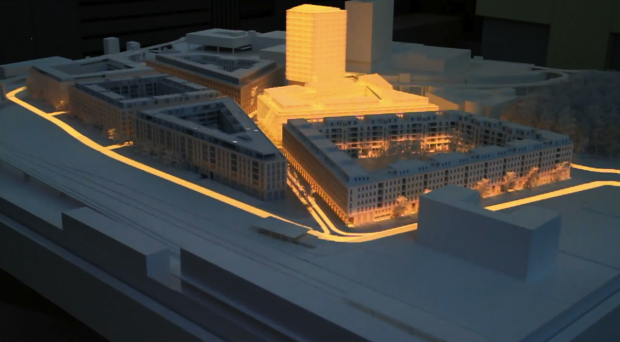As you might know by now, I’m a really big fan of robots. So I’m going to do a Looking Outwards on more cool robots:
Sepios by ETH Zurich, 2015
Sepios isn’t really an art project in the traditional sense, and is more of an exploration of underwater robotic actuation. But it looks and moves in a really cool unconventional way, so I’m going to call it art. Basically, it emulates the motion of a cuttlefish, and has 4 fins that wave around smoothly to create omnidirectional movement underwater. And when I say omnidirectional, the robot truly is omnidirectional: it can move around in 6 different directions and can rotate on 3 different axes, giving it unsurpassed maneuverability. The way it moves its fins is by actually using 36 servomotors, 9 for each fin, and then swiveling them in coordination to create propulsion. While the robot is still experimental and in development, I don’t think it will be that practical, especially when compared to underwater robots that use simple rotors. But then again, its moves in a really fluid, expressive way. Note that this is a student project at the Swiss Federal Institute of Technology (ETH) at Zurich.
BeachBot by Disney Research, 2015
BeachBot is a robot that is actually designed to make art. Basically, what it does is draw very large pictures on the sand. Somewhat reminiscent of turtles trudging through beaches during mating season, this robot rolls around on balloon wheels to leave no trace on the sand except where intended with a large precision rake that is dragged around on its rear. The rake, when applied to the sand, leaves a dark mark, and BeachBot uses its location and angle sensors to get accurate coordinates of the lines and curves it etches on the beach. It’s a simple, but brilliant concept, and it is executed very well by the Disney Researchers. I think this project might be improved by allowing “shades” in between lines for a gradient effect. One way of doing this would be to have a tank of water and spray areas with varying concentrations of water to darken the sand. But that’s just an idea, and I would love to see one of these in action while strolling around in a beach.
